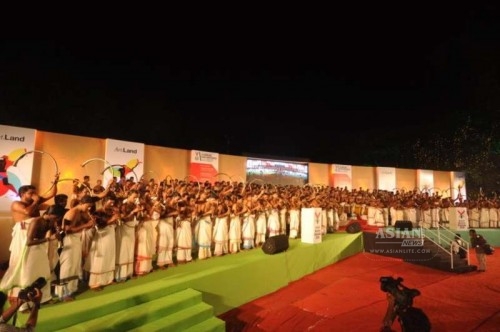
The second edition of the 108-day-long Kochi Muziris Biennale (KMB), billed as country’s biggest contemporary-art festival came to a close as the sun went down in this Kerala port city.
Official figures put the attendance in the event in excess of half a million, at least 100,000 more than in its debut year in 2012.
Kochi Biennale Foundation (KBF), which organised this event that opened on December 12 last year with 100 artworks by 94 artists from 30 countries, thanked the Kerala government for its support.
“We could explore not just the operational and intellectual dimensions of art, but could directly engage people through a wide range of cultural activities,” said KBF founder president Bose Krishnamachari about KMB’14 curated by Mumbai-based artist Jitish Kallat.
Governor P.Sathasivam who was the chief guest on the penultimate day said that KBF had positioned itself as a sustainable platform for international dialogue and enrichment of contemporary art.
KMB’14 director of programmes, Riyas Komu, who is also secretary of KBF which was founded in 2010 as a not-for-profit organisation for round-the-year strengthening of contemporary art infrastructure, said such a wide range of activities was strung together to essentially reveal and remind India’s composite culture-more so of the Kochi-Muziris region.
Kallat said he was keen that the visitors at the biennale should journey through works as varied as drawings, paintings, sculptures, installation, minimalist poem, video and performance.
“Even cartography was instrumental in one’s grasping of the world,” he added.